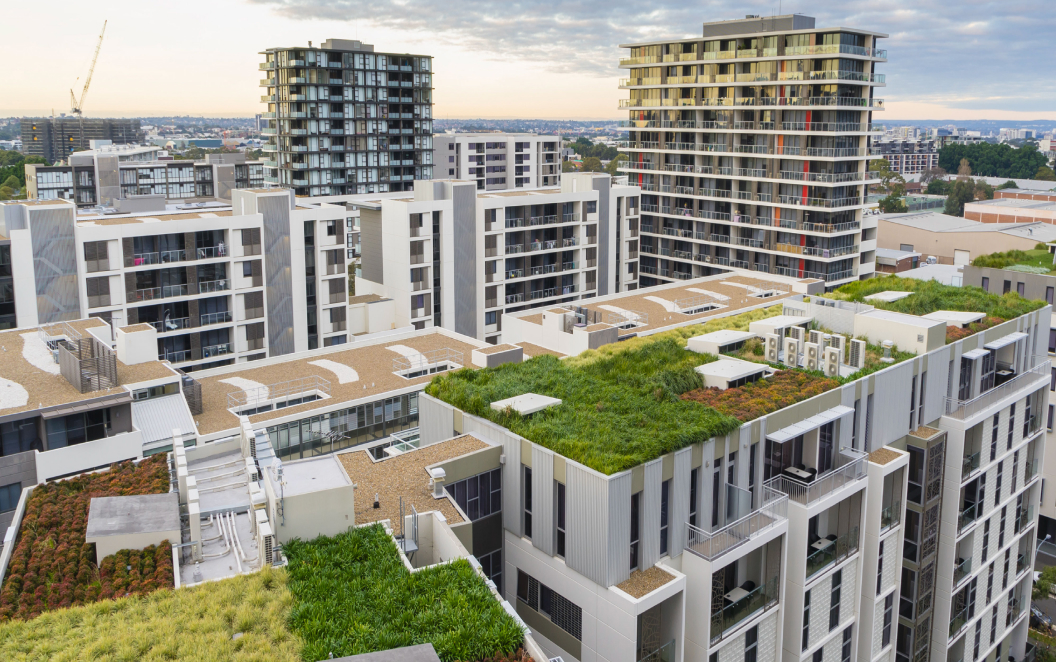La arquitectura y el diseño urbano pueden combatir los efectos del clima en la ciudad si se tienen en cuenta las condiciones de cada lugar. Como resultado, las viviendas aprovecharán mejor los rayos de sol y se evitarán las fuertes corrientes de aire. Igualmente las personas pasarán más tiempo en las calles, incluso en días de lluvia y frío. Una planeación adecuada favorece la calidad urbana y de vida en la ciudad.
ONU HABITAT.


Los factores climáticos influyen sobre el confort y la posibilidad de estar al aire libre en las ciudades. Son un elemento decisivo que ni la arquitectura ni la planeación urbanística deben obviar. Construir altos edificios, por ejemplo, genera extensiones de sombra y fuertes vientos en calles y plazas, por lo que no son recomendables en lugares donde hace poco sol o mucho viento.
El clima entre edificios y cómo este afecta al interior de los mismos influye en la calidad de vida. Hacer una planificación cuidadosa del clima debería ser una labor obligatoria para toda edificación nueva. Las ciudades tienen la posibilidad de crear oportunidades para disfrutar del sol y la sombra, de la lluvia y del viento.

Lo más natural sería que todos los edificios del mundo estén en sintonía con las condicionantes climáticas locales para así evitar un impacto negativo sobre el ambiente urbano.
Efectos del sol / Aprovechar el sol
La presencia o ausencia de sol influye en el paisaje urbanístico. En ciudades con alta incidencia solar y altas temperaturas, la estructura urbana debería contar con árboles frondosos y edificios con paredes más bien opacas con aberturas pequeñas.
En los climas más fríos, como los países escandinavos, donde los rayos del sol entran a un ángulo más bajo, los edificios se encuentran por lo general agrupados y no se elevan más que dos o tres pisos con techos inclinados. Por su parte, las calles, las plazas y los jardines son pequeños.
Gracias a esta estructura, el viento es redirigido por encima de las ciudades, liberando a las calles y a los jardines de sus efectos. Los volúmenes bajos y las cubiertas inclinadas permiten que los rayos del sol se metan entre las construcciones, calentando la mampostería y los pavimentos.
Lluvia vertical y horizontal
La lluvia en las ciudades puede caer de dos maneras: en posición vertical u horizontal. La segunda se corresponde con las ciudades dominadas por edificios altos. Así sucede en la ciudad holandesa de Rotterdam, en cuya área central, dominada por las torres, los fuertes vientos que corren entre las calles cuando llueve desvían el agua en esta dirección. Otras ciudades, a partir de este caso, han optado por edificios de menor altura, lo que permite que el viento pase sobre ellos sin afectar a la lluvia.
Cómo disminuir la velocidad del viento
Los vientos fuertes son considerados causa de desastre. Para frenarlos o disminuir su velocidad en las ciudades, la arquitectura puede recurrir a edificios bajos y árboles agrupados en mayor o menor medida.
Los edificios altos producen el efecto contrario. A una altura de entre 30 y 40 metros, las corrientes de aire que se generan en los niveles inferiores pueden alcanzar velocidades hasta cuatro veces mayor que en campo abierto. Esto hace que las condiciones climáticas en torno a estas torres sean considerablemente más frías. Las construcciones de menor altura permiten que las corrientes de aire frío pasen por encima, reduciendo al mínimo el viento entre ellas. La fricción que se genera sobre el terreno es clave.
Árboles para disminuir la temperatura
Los árboles urbanos purifican el aire, ofrecen protección y con su sombra, favorecen que disminuya la temperatura en las ciudades.
De acuerdo a la Organización de las Naciones Unidas para la Alimentación y la Agricultura (FAO), colocar los árboles de manera estratégica puede bajar entre 2°C y 8°C la temperatura del aire.
Además, si se colocan de forma adecuada en torno a los edificios, reducen las necesidades de aire acondicionado en un 30% y ahorran entre un 20% y un 50% de calefacción





